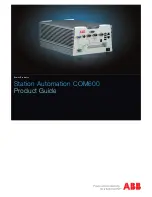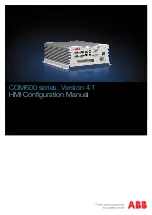
Connecting Serial Network Modules to a Network 6-11
Connecting the 4-Port Serial Module to a Network
•
V.35 Serial Cable Assembly
•
X.21 Serial Cable Assembly
•
EIA-530 Serial Cable Assembly
All serial cables provide a universal plug at the network module end. The network end of
each cable provides the physical connectors most commonly used for the interface. For
example, the network end of the EIA/TIA-232 serial cable is a DB-25 connector, the most
widely used EIA/TIA-232 connector.
All serial interface types except EIA-530 are available in DTE or DCE format: DTE with a
plug connector at the network end and DCE with a receptacle at the network end. V.35 is
available in either mode with either gender at the network end. EIA-530 is available in DTE
only.
Serial cables are not provided with the network module. For ordering information, see the
“Cisco Connection Online” section on page xiv.
Connecting the Module to the Network
After you install a 4-port serial module, use the appropriate serial cable to connect each of
the module’s DB-60 serial ports to a synchronous modem, channel service unit/data service
unit (CSU/DSU), or other DCE equipment. (See Figure 6-5.)
Summary of Contents for 2600 Series
Page 38: ...1 Port Fast Ethernet Module Cisco Network Modules Hardware Installation Guide 4 8 ...
Page 102: ...Voice Network Module LEDs Cisco Network Modules Hardware Installation Guide 9 4 ...
Page 126: ...Analog Modem Network Module LEDs Cisco Network Modules Hardware Installation Guide 11 8 ...
Page 136: ...HSSI Network Module LEDs Cisco Network Modules Hardware Installation Guide 13 6 ...
Page 140: ...Compression Network Module LEDs Cisco Network Modules Hardware Installation Guide 14 4 ...
Page 142: ...Cisco Network Modules Hardware Installation Guide A 2 ...
















































